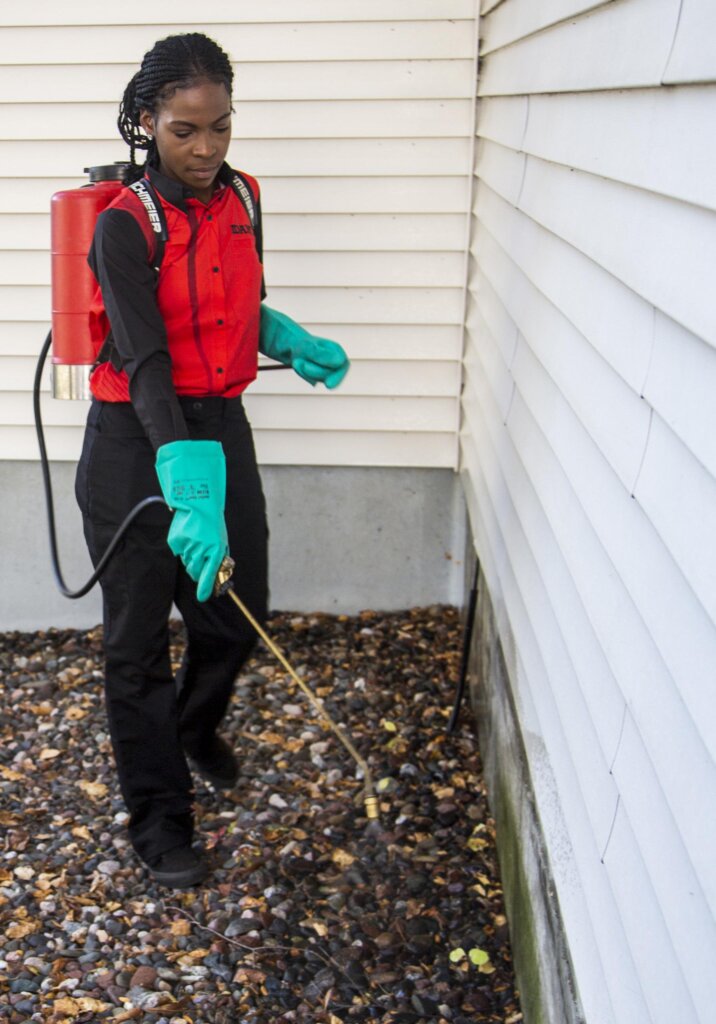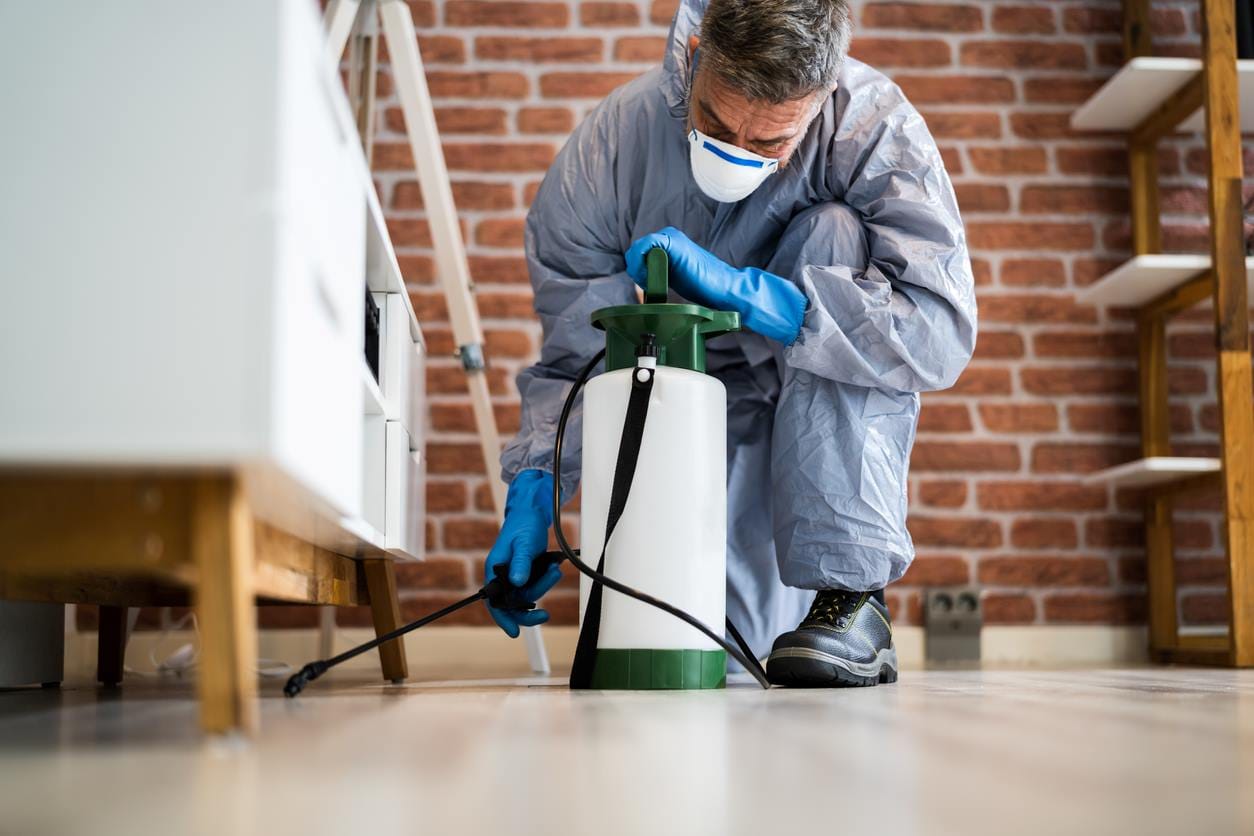Experienced Residential and Commercial Services by Pest Control Lockhart
Experienced Residential and Commercial Services by Pest Control Lockhart
Blog Article
Discovering Invasion and Therapy Strategies on the planet of Insect Control
The landscape of insect control incorporates a myriad of challenges, specifically as problems of typical house bugs proceed to evolve. By integrating preventative actions with advanced monitoring strategies, such as Integrated Parasite Administration (IPM), house owners can better safeguard their environments.

Common Household Pests
When it concerns handling our living rooms, recognizing typical home insects is important. These parasites not just disrupt our convenience but can likewise position health risks and damages residential property. The most common household pests include ants, roaches, rats, termites, and bed insects.
Ants, often seen foraging in kitchen areas, can infect food and develop huge swarms. Rats, consisting of computer mice and rats, can create structural damage and lug conditions like hantavirus and salmonella.
Identifying the signs of these pests, such as droppings, nests, or attack marks, is crucial for early treatment (Pest Control Lockhart). Correct hygiene techniques, sealing access points, and preserving a clutter-free atmosphere work preventative measures. By identifying these usual home insects and recognizing their habits, home owners can take proactive steps to alleviate invasions, making sure a healthier living environment
Understanding Bug Infestations
Insect problems can escalate rapidly, turning a small aggravation right into a considerable problem if not addressed immediately. Typical aspects contributing to infestations consist of inadequate hygiene, structural vulnerabilities, and seasonal adjustments that drive pests indoors.
Identifying the kind of bug is essential, as different species display varied habits and reproductive prices. Rodents may establish nests in concealed areas while pests like roaches grow in moist atmospheres. Early discovery often depends upon acknowledging indicators such as droppings, nibble marks, or unusual sounds, which can show a problem before it ends up being extreme.
Environmental conditions also play an important role in parasite proliferation. Cozy, moist environments can facilitate the quick development of pest populations, while changes in landscape design or building can unintentionally create helpful environments. Therefore, regular inspections and preventative procedures are paramount to mitigating the threat of invasions. An enlightened approach to recognizing these dynamics prepares for reliable pest management strategies in the future.
Therapy Techniques and Methods
Effective treatment techniques and strategies are crucial for alleviating insect infestations and restoring a safe atmosphere. A multifaceted strategy is usually best, including chemical, biological, and mechanical strategies customized to the details parasite and the seriousness of the problem.
Chemical treatments include the use of insecticides and herbicides, which can effectively eliminate parasites. However, proper application and adherence to safety and security standards are click to investigate important to reduce dangers to people and non-target organisms. Integrated Insect Administration (IPM) urges the sensible use chemicals as a last option, relying instead on surveillance and limit degrees to establish treatment demands.
Organic control techniques include introducing all-natural predators or parasites to lower pest populations. This method is progressively preferred, particularly in farming settings, as it promotes environmental sustainability.
Mechanical techniques, such as catches and barriers, offer immediate remedy for pests without presenting chemicals. Options include sticky traps for pests or physical barriers for rats.
Inevitably, the option of treatment approach need to consider the particular insect, the setting, and potential effects on human wellness and ecosystems. A well balanced mix of these techniques can successfully take care of problems while promoting long-term bug control options.
Preventive Procedures for Homes
Proactively resolving insect concerns before they escalate is crucial for preserving a healthy and balanced home setting (Pest Control Lockhart). Carrying out effective preventive actions can considerably minimize the chance of infestations, eventually safeguarding both your home and wellness

Correct landscaping additionally plays an essential duty in avoidance. Keeping bushes and trees cut away from the residence lowers the opportunities of insects locating their way indoors. Guarantee that drainage systems are functioning efficiently to avoid standing water, which can draw in mosquitoes and various other bugs.
Lastly, regular inspections are recommended. Consistently checking for indicators of bug task permits for early intervention. By taking on these preventative steps, house owners can create an atmosphere that is much less friendly to parasites, consequently enhancing their overall lifestyle and minimizing the demand for extensive parasite control treatments.
Business Parasite Control Approaches
An extensive method to commercial parasite control is essential for businesses aiming to maintain a safe and hygienic atmosphere. Reliable techniques involve a mix of regular assessments, worker training, and the execution of Integrated Pest Administration (IPM) practices.
Routine assessments enable very early discovery of insect activity, permitting for prompt intervention. Organizations ought to create a routine timetable for these evaluations, concentrating on risky locations such as kitchen areas, storeroom, and waste disposal sites. address Employee training is just as vital; team ought to be enlightened on the indications of pest infestations and the importance of reporting them quickly.
Carrying out IPM techniques helps mitigate pest concerns sustainably. This consists of habitat alteration, such as sealing entry points and lowering clutter, as well as employing all-natural deterrents before considering chemical treatments.

Moreover, working together with a qualified parasite control supplier makes sure accessibility to professional knowledge and innovative treatment alternatives. This partnership can lead to personalized insect control prepares customized to the certain demands of the business, decreasing threats and improving general effectiveness. Eventually, a positive and informed technique promotes a pest-free setting, securing both public health and company credibility.
Final Thought
In verdict, effective pest control requires a detailed understanding of common home pests and their habits, combined with targeted therapy methods. Applying preventative measures alongside treatment methods website link such as Integrated Pest Management and organic control improves the ability to reduce invasions.
Report this page